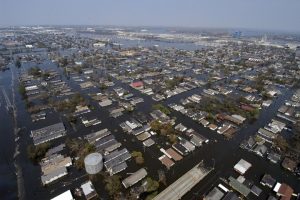Traffic control is revolutionizing daily. Therefore, it has employed new and modern techniques to improve the transport sector. The remote sensing technique has been found useful in the transport sector. It is greatly used in traffic management. The spatial information collected from these remote sensors is widely used to control and manage traffic. This article shall discuss some of the applications of remote sensing techniques in the transport sector.
1. Infrastructure observation
Satellites and other remote sensors are known for their mighty power of monitoring and observing the ground from space. They provide ample information that is used to make decisions on traffic management.
2. Right-of-way planning
Right-of-way is the area set aside for the construction of the highway. During Right-of-way planning, remotely sensed data is used to indicate areas suitable for the construction of the highway. The spatial data collected is vital to traffic management as it feeds them with accurate and reliable data.
3. Traffic control
Other than traffic lights and officers, other modern tools control traffic. The remote sensing technique is one of these methods. These space-based tools monitor the highway and can be used to track over-speeding vehicles. Since they are connected to the traffic station, the sensed data is used to arrest the vehicle’s driver in question. It helps in controlling and minimizing roads accidents.
4. Accidents management
Accidents is one of the main challenge associated with traffic control. The traditional approach to accidents is time-consuming, leading to the loss of many lives. The introduction of remote sensing techniques in traffic management has eased the handling of road accidents. Once the accidents are sensed, satellites send the spatial information to headquarters. This information is used to control traffic in the affected area.
5. Monitoring landslides
Landslides contribute to almost 2% of congestion and accident on the roads. Remote sensors have played a vital role in monitoring the highway and detecting landslides. In a landslide, the sensor sends the spatial data to the traffic offices. Thus, the road leading to the landslide region is closed, which would help curb accidents and congestion that would occur.
6. Monitoring traffic congestion
Traffic congestion poses a great challenge to traffic officers, and they cannot control vehicles fully. Due to this, traffic management has employed remote sensors to monitor motorists. Traffic officers rely on the sensed data to control the traffic.
7. Allocation of traffic officers
The transport sector has greatly benefited from the use of remote tools. These tools monitor the highway from space and send the spatial data to headquarters. The collected data is used to assign traffic officers to various highway points where there’s congestion.
8. Traffic Management Database
For the traffic sector to run smoothly, there’s a database that contains information related to highway and traffic management. Data contained in this database are collected using various tools, both traditional and modern. The remote sensing technique has proved to be an effective method in the data collection process as it yields accurate and reliable data.



